HAWTHORN AT DUSK
Crataegus monogyna, commonly known as the common hawthorn or whitethorn, is a flowering plant that grows as a shrub or small tree, and is often found among other shrubs and small trees that form dense walls of intricate vegetation between woods and meadows. All the photographs you'll see in this post were taken in one of those places, on the edge of a roadside meadow between the villages of Shishan and Valtura, about six or seven kilometers from where I live. On the 11th of May, this year, I spent a couple of evening hours walking along the line of shrubs, and most of that time I was observing what was going on among the flowers of Crataegus monogyna.
The small, shrubby tree was in bloom, so there was no shortage of pollinators to photograph. I wasn't there long enough to see a lot, but I caught a few interesting species on camera, which is enough for a medium-sized post like this.
Here, you can see a wide shot that nicely introduces the place: the large meadow bordered by shrubs and trees. Crataegus monogyna is in the foreground.
This is the Smaragdina salicina, a leaf beetle from the Chrysomelidae family. Young leaves and soft petals of the plants from the genus Salix and Crataegus are the favorite food of this species. These beetles can feed on a wider variaty of plants, including some herbaceous ones, but if there is a Salix or Crataegus shrub or tree, they will gravitate around it.
Smaragdina salicina, shown in these shots, was enjoying the seemingly never-ending food in the sea of juicy white flowers.
The abundance of flowers is impressive, but the blooming doesn't last long. A week later, hawthorn was covered with fruits, and fallen, dissolving petals were scaterred on the herbaceous vegetation under the tree.
These beetles aren't the typical pollinators that feed on nectar or pollen without damaging the flower, but still, while walking and climbing from flower to flower to chew the petals, some pollination gets done.
These four photographs are here to let your eyes graze a bit on clusters of Crataegus monogyna flowers before continuing with the macro stuff.
Here you can see a typical, well-known pollinator resting among the flowers. European honey bees (Apis mellifera) can be seen buzzing around in the sunny daytime hours. At dusk, they disappear from the scene. Usually. Eucera longicornis (European long-horn bee) and other solitary bees spend the night hanging on the grass and other herbaceous vegetation, but I rarely see a honey bee remaining on the feeding ground during the night. Where do they go? I'm not sure. They return to their colonies, I supose.
Here you can see one of the lower branches of the tree abundantly covered with flowers.
The hermaphrodite flowers have numerous brown or red stamens and a pistil right in the center. The plant relies on insects for pollination.

This is the Grammoptera ruficornis, a small longhorn beetle from the Cerambycidae family. I took quite a few portraits of this species on the 11th of May, but since the dark insect didn't look great illuminated by the flash, I discarded most of them.
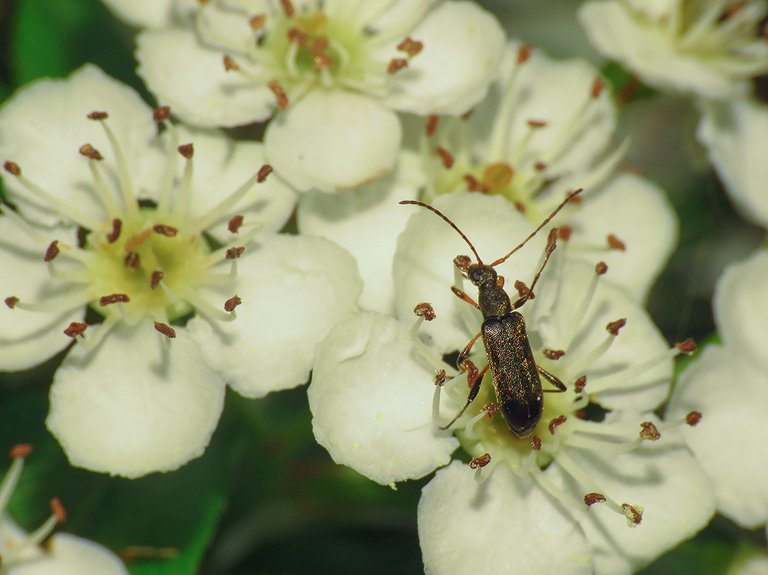
Here you can see one of the two best Grammoptera ruficornis-themed shots I was able to get on that occasion. It's the second best, in my opinion. I mean, if this were a contest, the shot would win second place; I'm not sure that "the second best" means a second place, a silver medal, and that kind of stuff, but that's what I wanted to say.
I'm completely satisfied with the scene. The pose of the beetle, the angle that emphasises the depth of the field, it all gives a sensation of being part of that macro world, a sensation that a typical flat, "perfect" macro shot rarely achieves. I often love to make my macro look like a wide shot that shows the insect in its macro scenery. In the following photograph ...
... you can take a closer look at the beetle feeding on pollen from one of the stamens.
Adult Grammoptera ruficornis feed exclusively on nectar and pollen. The common hawthorn is one of their favorite plants. Larvae feed on the wood of dead twigs.
In this set of four photographs, you can see more flowers of the same kind. If you take the time to explore all the little details in the above picture, you'll notice that some flowers have already lost their white petals.
This caterpillar is a larval stage of a moth from the Geometridae family.
The colorful, twig-shaped larva looked great among the flowers.
The name of the species is Erannis defoliaria. I don't remember ever seeing the adult moth in nature. Caterpillars feed on a wide variaty of broad-leaved shrubs and trees, including Crataegus monogyna.
Here you can take another look at the flowers. Always the same Crataegus monogyna flowers. The photograph was taken before dusk.
This interesting, long-snouted insect...
... is a weevil from the Curculionidae family.
The scientific name of the species is Curculio glandium. It is commonly known as the acorn weevil.
I noticed the beetle on the twig of the common hawthorn tree, so the first shots were taken there.
When the insect moved to the leaves, I took a few more shots ...
... and then, finally ...
... I had the opportunity to photograph the Curculio glandium among the flowers. A combination of insect and flower always creates an especially photogenic scene.
The life cycle of this species doesn't revolve around the common hawthorn, the weevil was just passing through on the way to its host plant - the oak tree.
Curculio glandium females deposit their eggs in acorns.
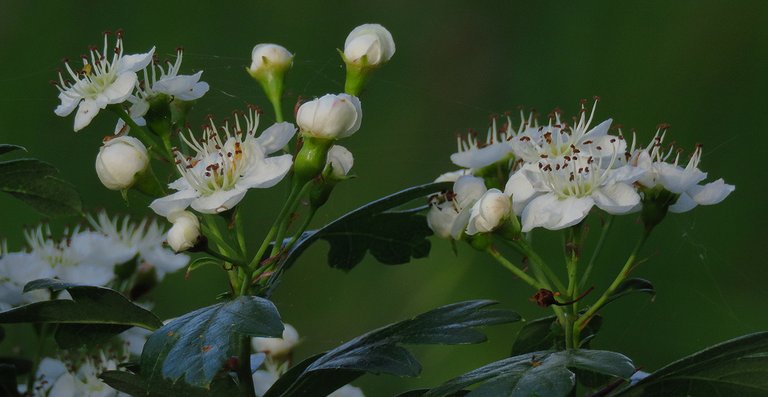
Here you can see more Crataegus monogyna flowers, for a change. The following photograph ...
... shows a caterpillar hidden under the flowers.
Just like the Erannis defoliaria, introduced earlier in the post ...
... this is a moth larva ...
... and it belongs to the Geometridae family.
In this case, however, I can't tell you what species exactly this is.
Through this exuberant set of six photographs, you can see the common hawthorn in wide shots that show the edge of the meadow, and up-close photographs focused on smaller details.
This is the Thamnotettix dilutior, a leafhopper from the Cicadellidae family. The following photograph ...
... reveals that the leafhopper was surrounded by flowers.
This is the only spider I found on the hawthorn back then on the 11th of May. It's a crab spider from the Thomisidae family. The scientific name of the species is Synema globosum. The small spider climbed one of the very few young fruits scaterred among the flowers, and when the photograph was taken, it was trying to reach the nearest leaf.
And that's it. The post ends here.
AS ALWAYS ON HIVE, THE PHOTOGRAPHS ARE MY WORK.
The following links will take you to the sites with more information about some of the protagonists of today's post. I found some stuff about them there.
https://en.wikipedia.org/wiki/Crataegus_monogyna
https://www.inaturalist.org/taxa/470760-Smaragdina-salicina
https://en.wikipedia.org/wiki/Western_honey_bee
https://en.wikipedia.org/wiki/Grammoptera_ruficornis
https://www.naturespot.org/species/mottled-umber
https://en.wikipedia.org/wiki/Curculio_glandium
https://bladmineerders.nl/parasites/animalia/arthropoda/insecta/hemiptera/cicadomorpha/membracoidea/cicadellidae/deltocephalinae/athysanini/thamnotettix/thamnotettix-dilutior/
https://en.wikipedia.org/wiki/Synema_globosum



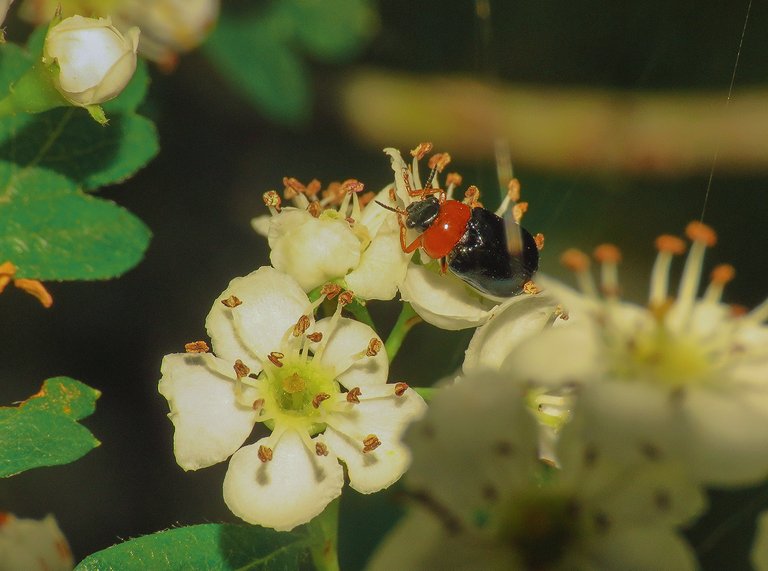
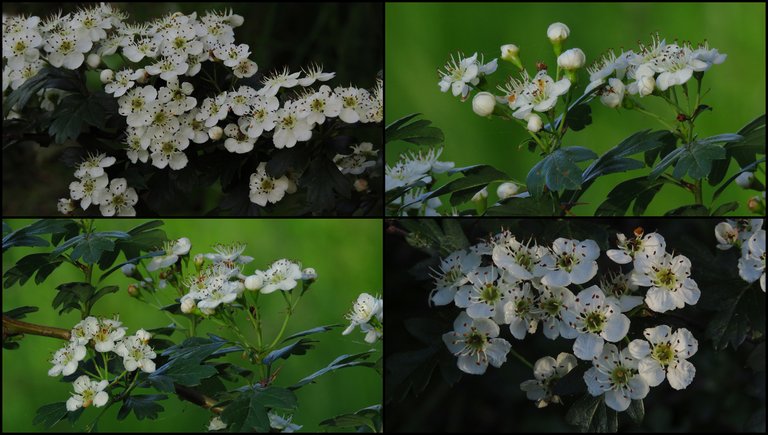


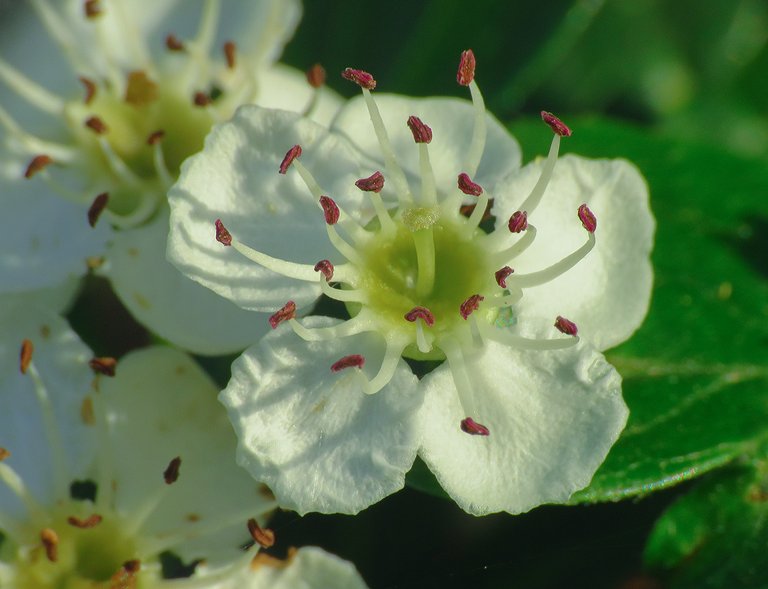

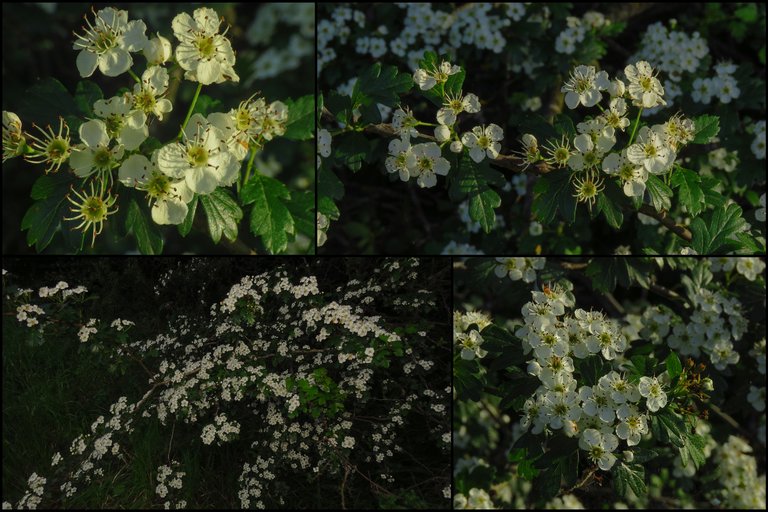

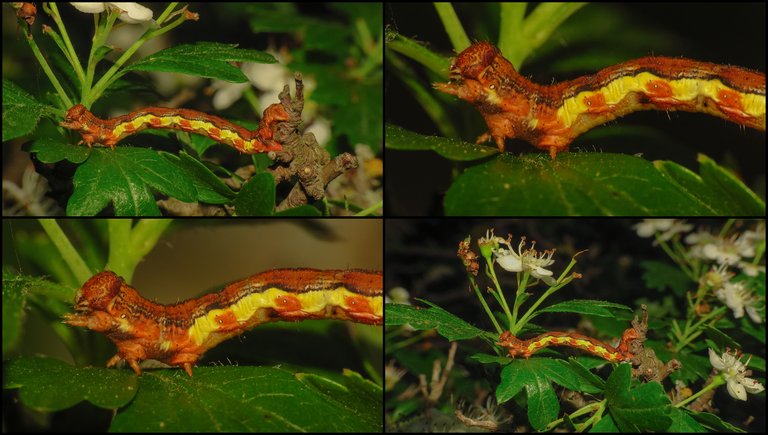

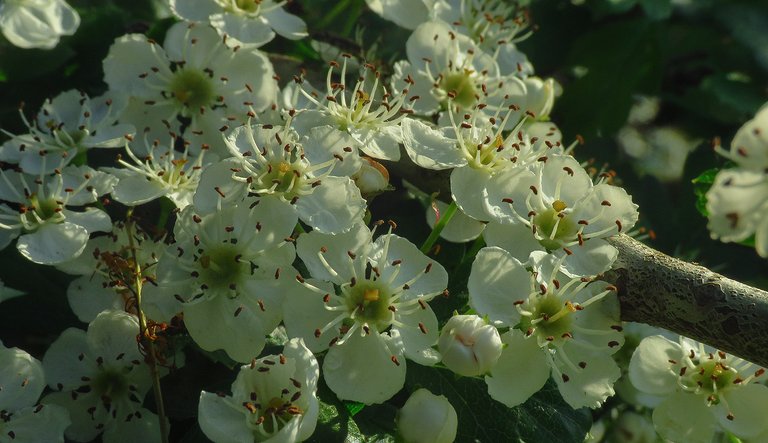
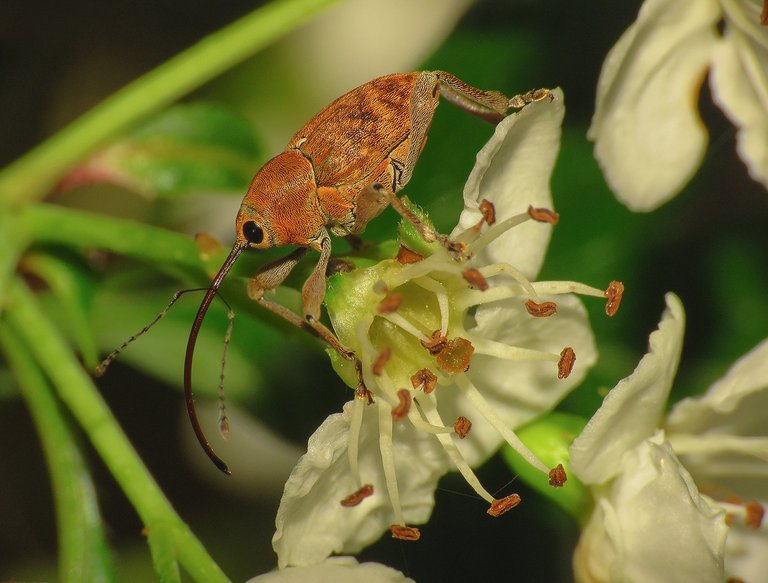

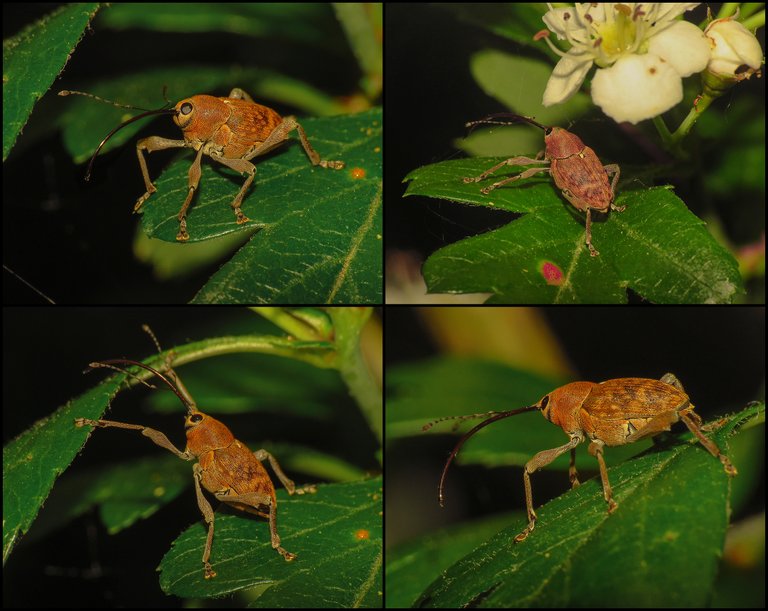
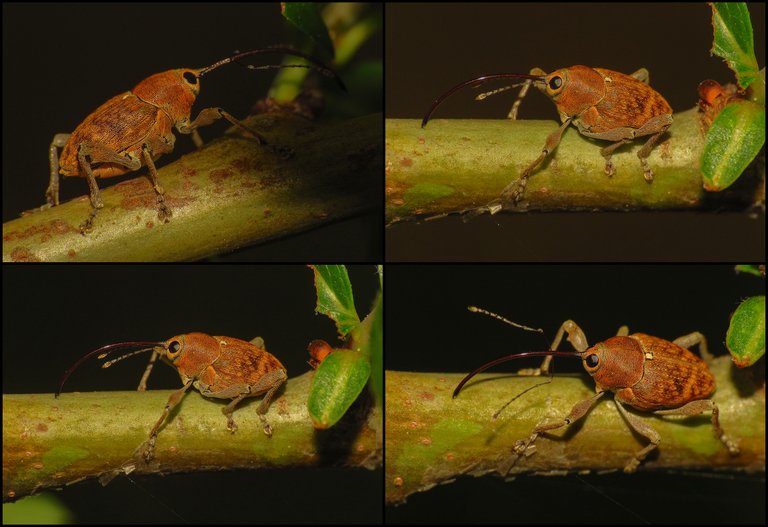
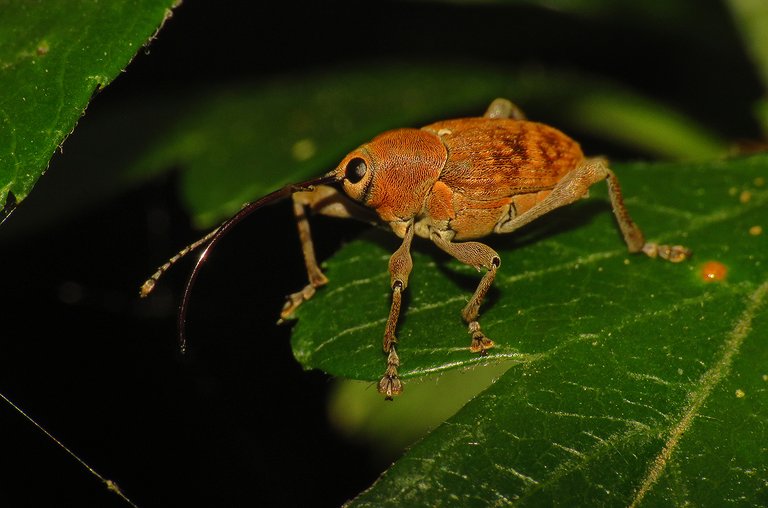



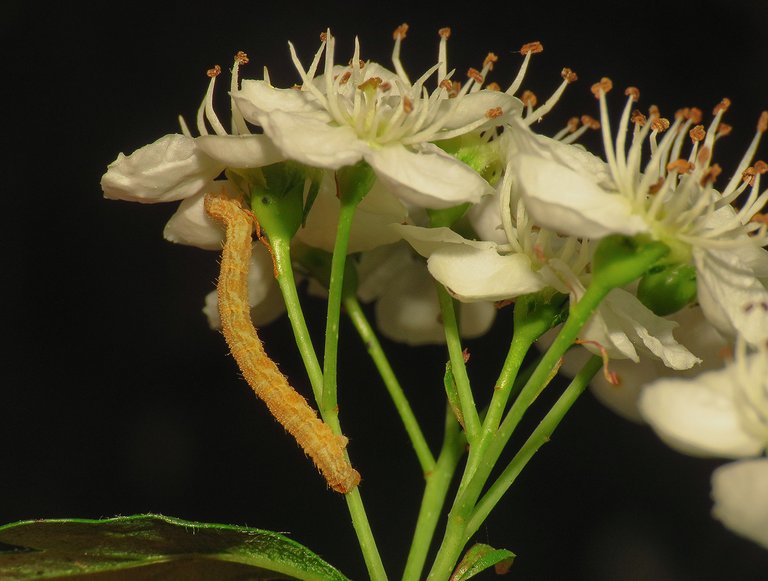
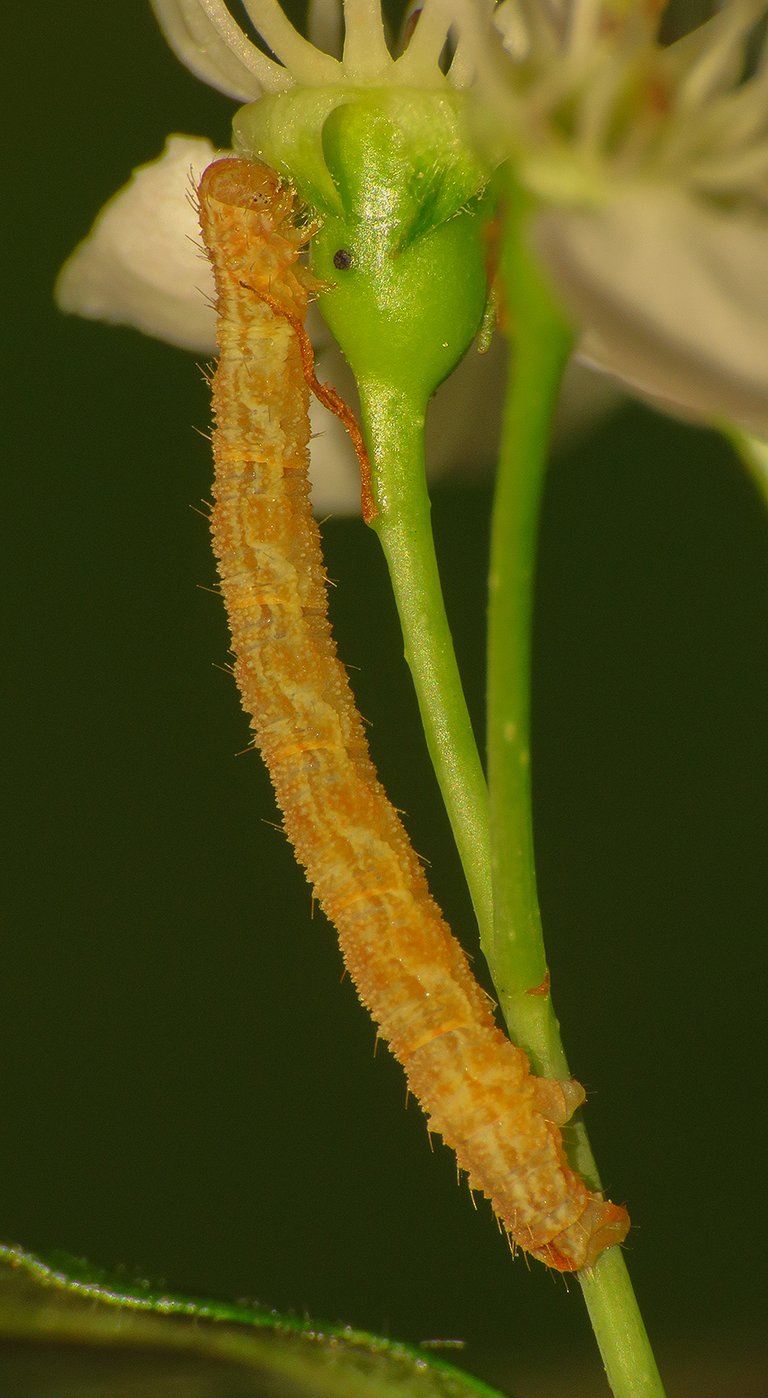

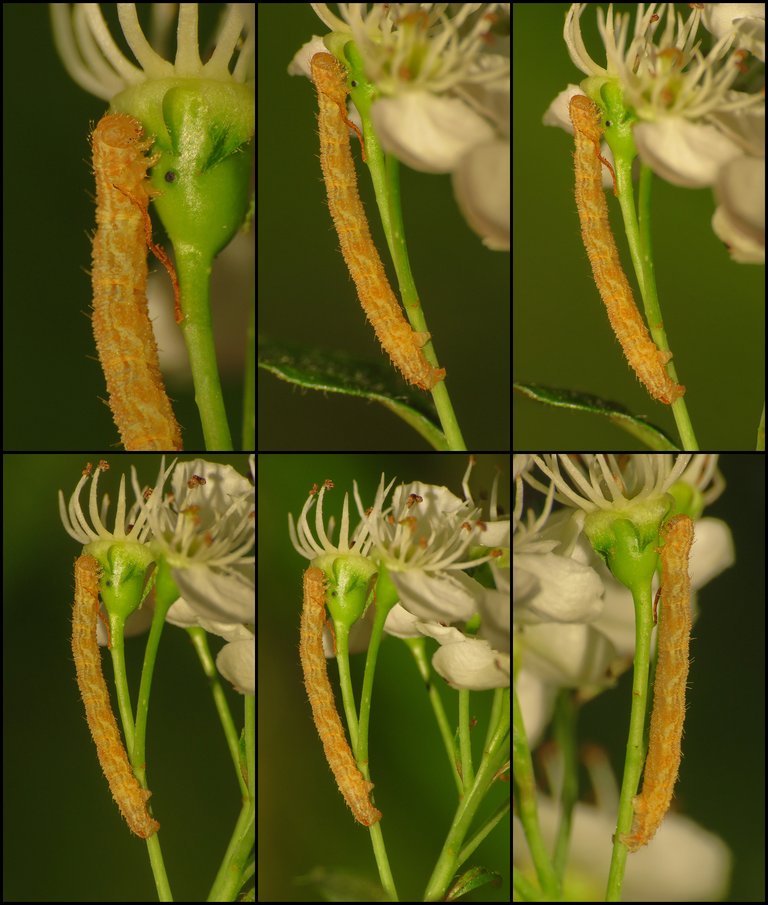

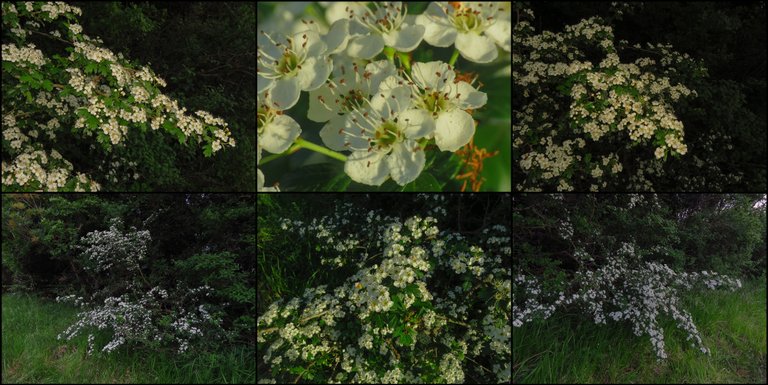
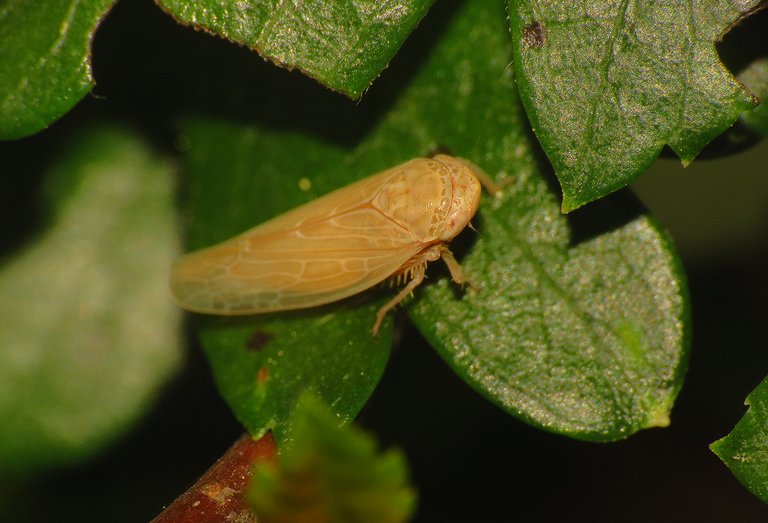


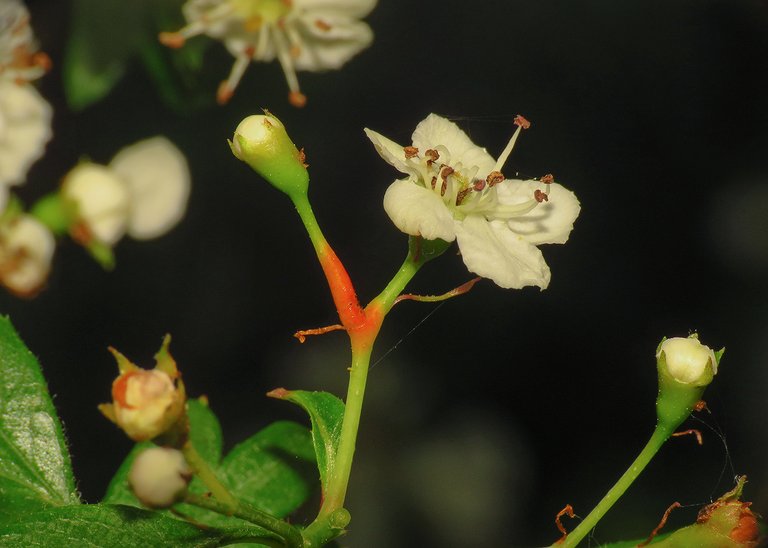
You received an upvote ecency
Photos of your flowers are really very beautiful and also the insects that you portrait are very extraordinarily beautiful
beautiful photos as expected to see and well labelled. I appreciate the fact that some insect names I have come across was known through your post which I appreciate you sharing.
Thank you. 🙂 Glad you find these posts informative and interesting.
:) :)
!discovery 30
This post was shared and voted inside the discord by the curators team of discovery-it
Join our Community and follow our Curation Trail
Discovery-it is also a Witness, vote for us here
Delegate to us for passive income. Check our 80% fee-back Program
It's amazing, how detailed the insects look in your photography :)
🙂

You're welcome :)
Your pictures are definitely art!
I love this one the most!
It looks like some kind of squirrel because of the macro shots, well done!
🐛🐛🐛🐛🙂🐛🐛🐛🐛
very good photography results.
Insect and flower which are amazing to look at. I never seen such kind of white flowers before. Nice to see it. Thanks for sharing with us
The photography in each photo is beautiful and I love these kinds of natural insect and flower photos.
Hawthorn bushes produce some pretty flowers. They also are a great home for insects as you have just proven. It was too see a bee out at night, usually they go back to the hive. Maybe it's sick. Those were some great pictures of the caterpillar and the long snouted insect. So many interesting finds, and great macro shots. They're always a lot of fun to look at!
🙂
👌
With the flowers, your post became even more interesting for me, beautiful photos, great result
https://x.com/lee19389/status/1929287175650087373
#hive #posh
I also go to the park and nursery in the same way. Earlier I didn't know the names of the flowers, but after reading your post, my knowledge has increased a lot. Now I see very special flowers and trees and I remember their names.
👍Glad to hear that. 🙂
Congratulations @borjan! You have completed the following achievement on the Hive blockchain And have been rewarded with New badge(s)
Your next target is to reach 75000 upvotes.
You can view your badges on your board and compare yourself to others in the Ranking
If you no longer want to receive notifications, reply to this comment with the word
STOPCheck out our last posts:
A whole and lovely world that otherwise we would have known ... all I have to do is imagine the sounds and smells of such an evening to be taken from this world to that one...
Yes, the evening atmosphere at this time of the year is soothing and exciting at the same time. The scent of fresh grass, various flowers, and aromatic plants saturates the air, and crickets, birds, and sometimes frogs provide the soundtrack for the experience. It's great to be in the woods or meadows in the evening.
The flowers look so blooming and glowing in the dark. The shots are always topnotch.
The white thorn is beautiful and definitely home to many insects and caterpillars. That’s first caterpillar is colorful and beautifully captured…A great work of art…🫡